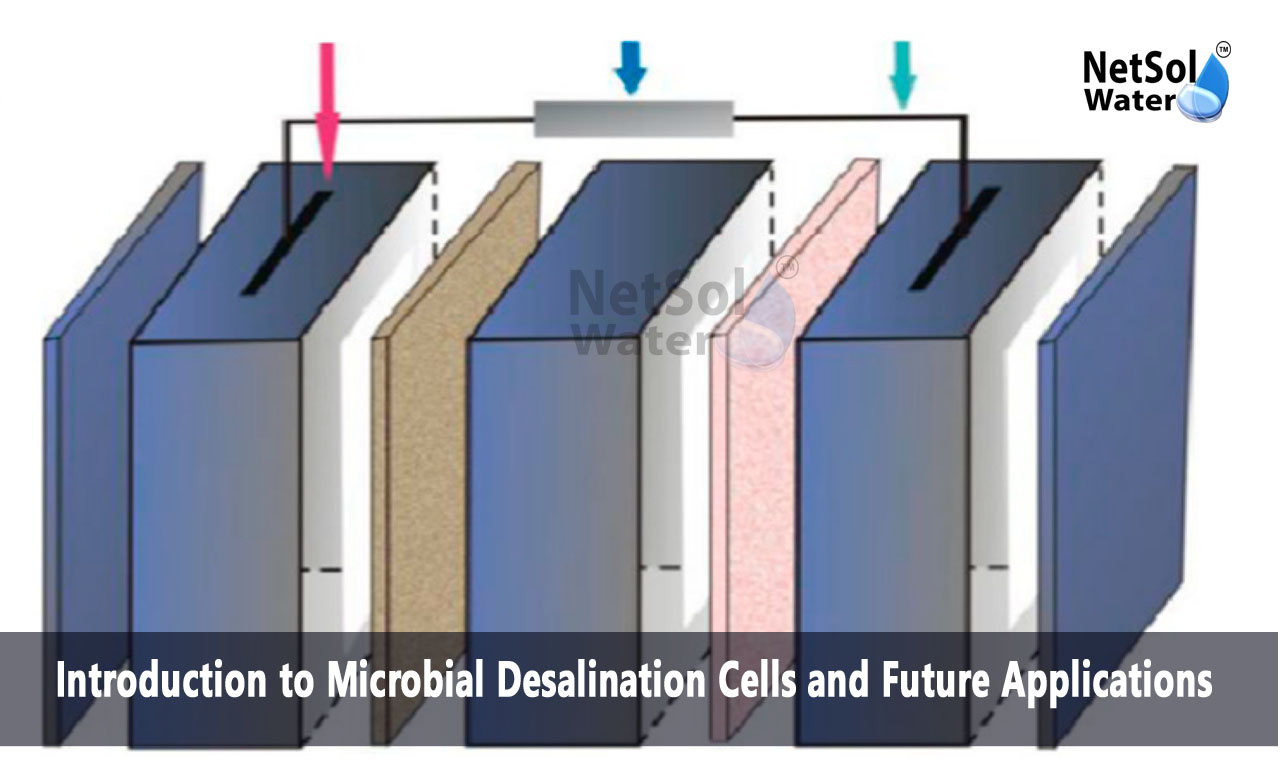What are Microbial Desalination Cells (MDC) and Future Applications?
Water is life, but not all water on our planet is safe or potable. A lot of it is salty, contaminated, or difficult to treat. That is where new and intelligent technology steps in — one of the most exciting among them is Microbial Desalination Cells (MDC). Not only do they purify water, but they also produce electricity as a byproduct!
We are going to describe what Microbial Desalination Cells are, how they function, the uses they currently have, and ways in which they can assist in the future.
What Are Microbial Desalination Cells (MDC)?
Microbial Desalination Cells are a kind of innovative water treatment system that harnesses the strength of microbes (small living things) and electrochemical reactions to purify salty or contaminated water. The best thing about MDCs is that they can desalinate water (remove salt from water), purify wastewater, and produce electricity — all from one device.
This technology is continually being developed but has a lot of promise for where fresh water and electricity are in low supply.
How Do Microbial Desalination Cells Operate?
MDCs operate through three chambers divided by special membranes:
· Anode Chamber – Here microbes digest organic waste, such as from sewage. As they digest it, they give off electrons and protons.
· Middle (Desalination) Chamber – This is where the salty water is stored. Only specific particles (ions) are allowed to pass through special membranes, eliminating the salt from the water.
· Cathode Chamber – This chamber collects the electrons and protons and mixes them with oxygen to make water.
When the electrons move from the anode to the cathode (via a wire), they create electricity. At the same time, salt is extracted from the middle chamber water, making it less salty or even potable depending on the design of the system.
Read: Sewage Treatment Plant Manufacturer
Advantages of Microbial Desalination Cells
Clean Water and Power Combined
One of the greatest benefits of Microbial Desalination Cells is that they purify wastewater and generate electricity and make salty water clean as well.
Low Energy Requirements
Unlike conventional desalination techniques (such as reverse osmosis), MDCs are not required to have high pressure or much electricity. They take advantage of natural biological reactions to perform the work.
Environmentally Friendly
MDCs reduce the consumption of chemicals and conserve energy. Because microbes handle the cleaning, it's an environmentally friendly process.
Applicable to Remote Locations
MDCs might be a perfect fit for villages or towns that don't have much power, and clean water is difficult to obtain.
Decreases Saltwater Pollution
By desalinating seawater or brackish water, Microbial Desalination Cells can minimize the harm salty wastewater causes to the environment.
Current Challenges
Although Microbial Desalination Cells sound incredible, they still have a few challenges:
· Slow Process: The desalination and cleaning process is slow compared to traditional processes.
· Low Power Output: The power produced is still limited and might not be suitable for extensive usage.
· Membrane Costs: The unique membranes employed in MDCs are costly.
· Scaling Up: Converting laboratory models to actual, large-scale plants remains a subject of research.
Researchers and engineers globally work on overcoming these challenges to develop MDCs as more pragmatic and efficient.
Future Applications of Microbial Desalination Cells
As technology advances, MDCs may find application in numerous fields:
· Rural Water and Electricity Supply: MDCs may be used as mini-systems in distant villages, supplying clean water and limited electricity for lights or telephones.
· Wastewater Treatment Plants: They may be incorporated in current sewage treatment plants to increase water recycling and decrease energy consumption.
· Emergency Relief: In floods, earthquakes, or droughts, Microbial Desalination Cells may be able to supply clean drinking water and energy when conventional systems are interrupted.
· Military and Space Applications: Transportable MDC systems might assist soldiers or astronauts in water recycling with energy production, particularly in remote areas.
· Smart Cities and Green Buildings: In the future, MDCs might be installed in buildings to treat greywater (such as from showers and sinks) and generate their own water and energy.
Conclusion
Microbial Desalination Cells are an innovative and thrilling solution to two large issues simultaneously — dirty water and limited power. Microbes are employed in these systems to purify water and generate electricity concurrently. Although technical issues remain to be tackled, the prospects of employing MDCs in remote rural communities, crises, and environmentally friendly cities are extremely bright.
While research goes on, Microbial Desalination Cells can become an integral component of water and energy solutions of the future. They remind us that at times the smallest living creatures can provide the brightest solutions.
Do you need an advice or assistance on selecting the best water and waste water treatment unit? We have solutions for all your problems!
Let us know your problem, our experts will make sure that it goes away.
For an assistance or related query,
Call on +91-9650608473 Or write us at enquiry@netsolwater.com



